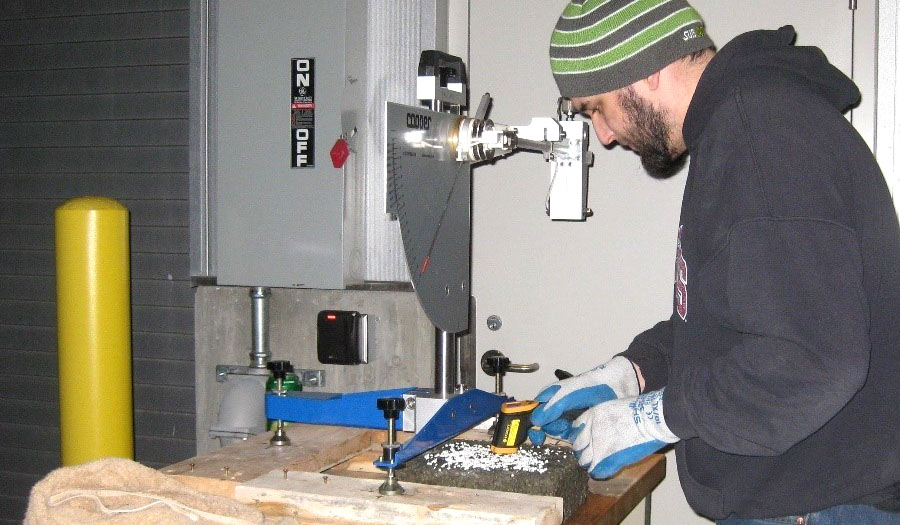Pavement markings such as single and double divider lines, edge lines, crosswalks, and bike lane markings are critical in guiding roadway users. However, pavement markings can also lead to catastrophic crashes for motorcyclists and bikers when they are wet or icy. This study evaluated three different pavement marking materials in dry, wet, and icy conditions, in the laboratory and in the field, to help improve rider safety.
For laboratory testing, the researchers chose three different pavement marking materials after a careful review of state specifications and common practice on the Washington State University campus. Evaluated were waterborne paint, preformed fused thermoplastic, and cold applied pre-formed tape surfaces. These were compared with a neat concrete slab by using a British Pendulum Tester (BPT) in dry, wet, and icy conditions. Two different rubber sliders on the BPN were used to simulate different users: a pedestrian slip rubber and tire slip rubber. The frictional properties were recorded as a British Pendulum Number (BPN).
The laboratory test results showed that the paint and thermoplastics produced lower BPN values than the neat concrete surface. However, the centerline striping that was tested showed higher frictional properties than the neat concrete surface because of the contours and surface macrotexture of the tested striping.
For field testing, two locations with painted markings on the WSU Pullman campus were chosen for testing. Each location was evaluated by using the BPT, and then two bicyclists rode over the markings in a variety of ways in dry and wet conditions. A devised safety scale allowed the riders to evaluate the field markings. The results showed that riders generally felt safe while riding in a straight line over the pavement markings. Most of their unsafe ratings occurred during wet testing and as the cyclists turned and braked over the pavement markings.
In comparing the BPN values from the laboratory and field testing, the laboratory values were typically higher. This was most likely due to the fact that beads were present on the laboratory markings and not on the field markings. The authors concluded that centerline striping showed the most promising frictional properties. Although paint and thermoplastics had lower frictional properties than those of the neat concrete surface, the use of beads helped improve the laboratory values over the field testing values. Through more testing, a better understanding of BPN values and better correlation between them and rider safety can be determined to evaluate pavement markings.
Authors:
Somayeh Nassiri
Harry Rodin III
Mina Yekkalar
WSU Department of Civil and Environmental Engineering
Sponsor: PacTrans

